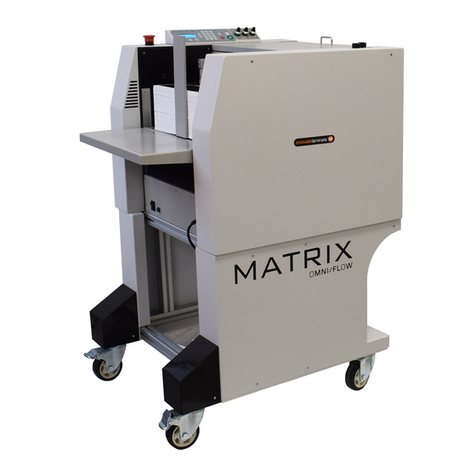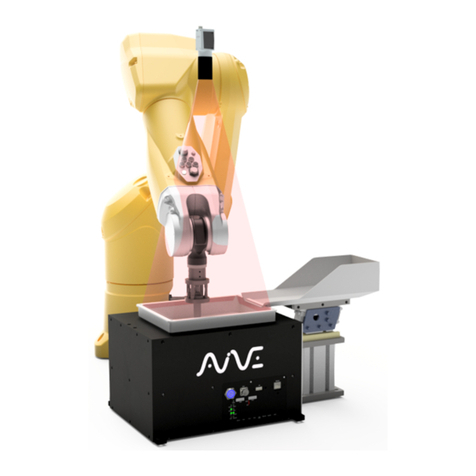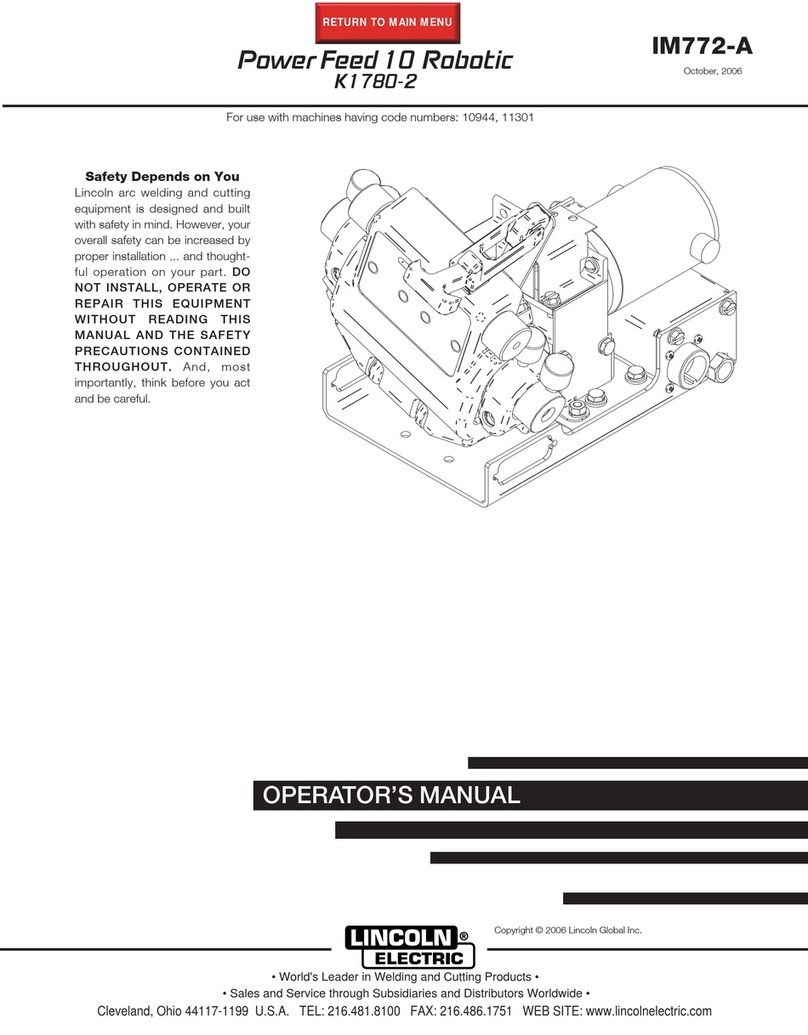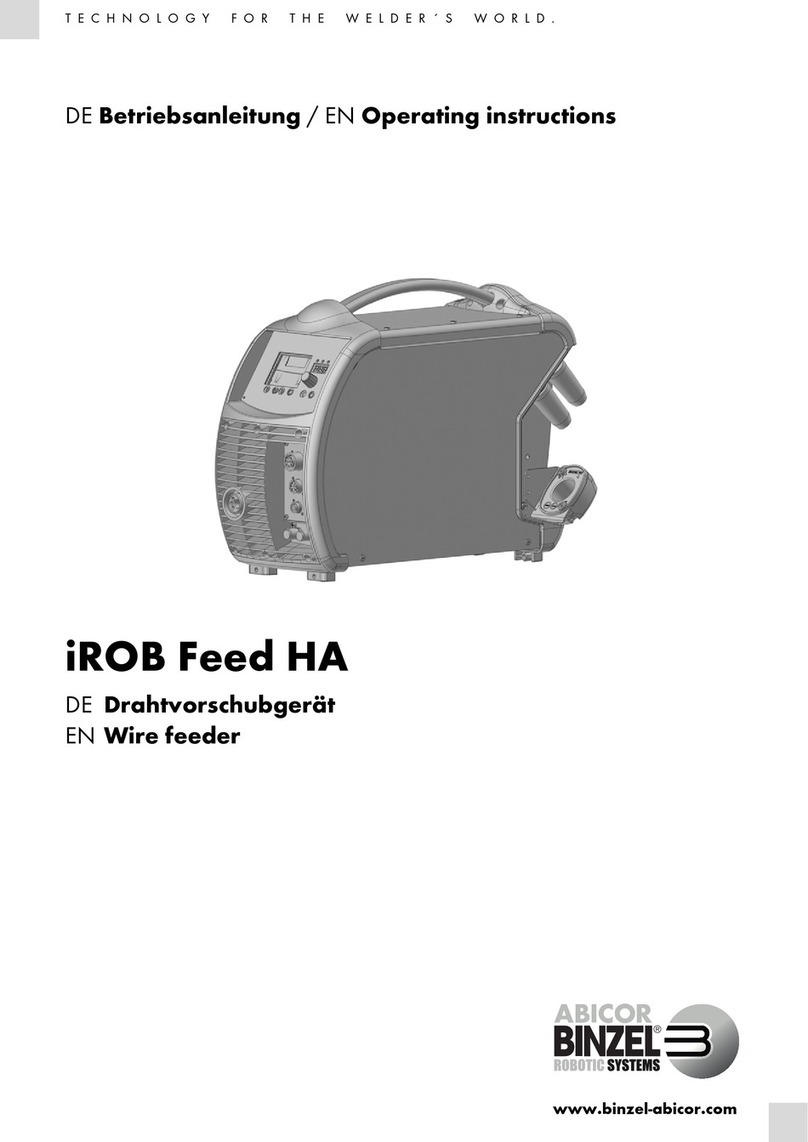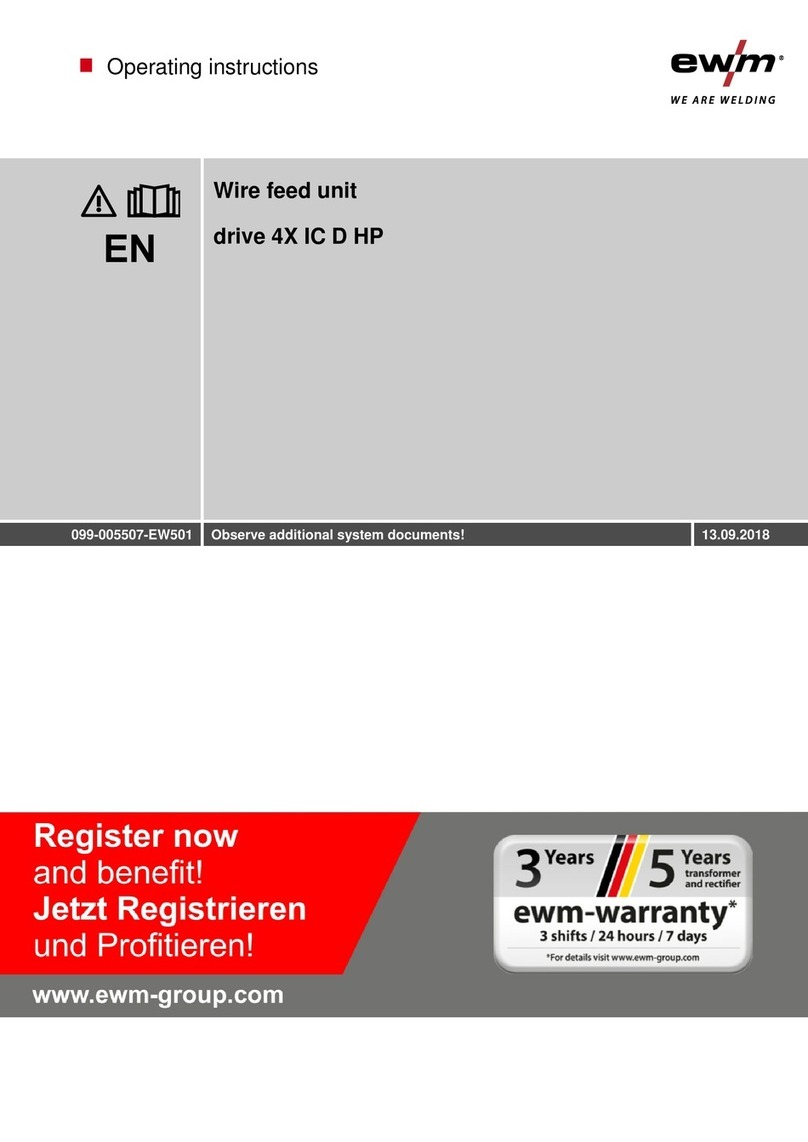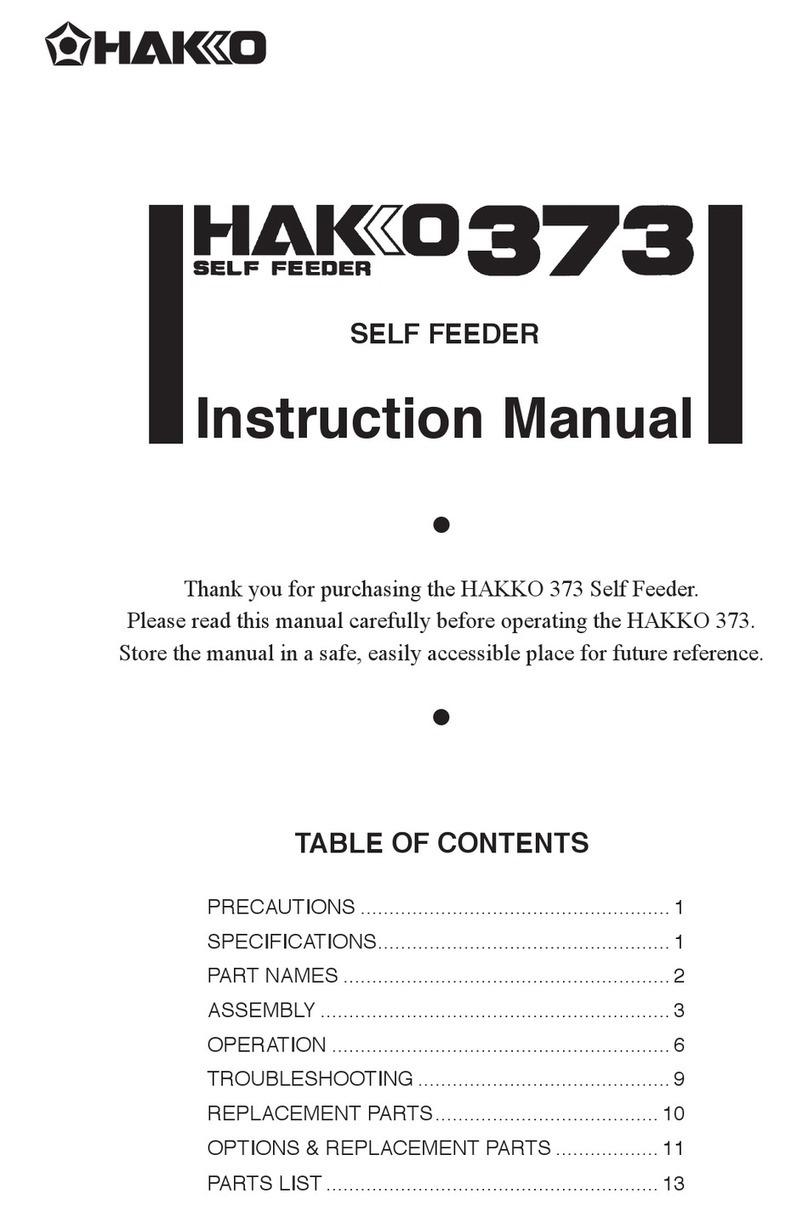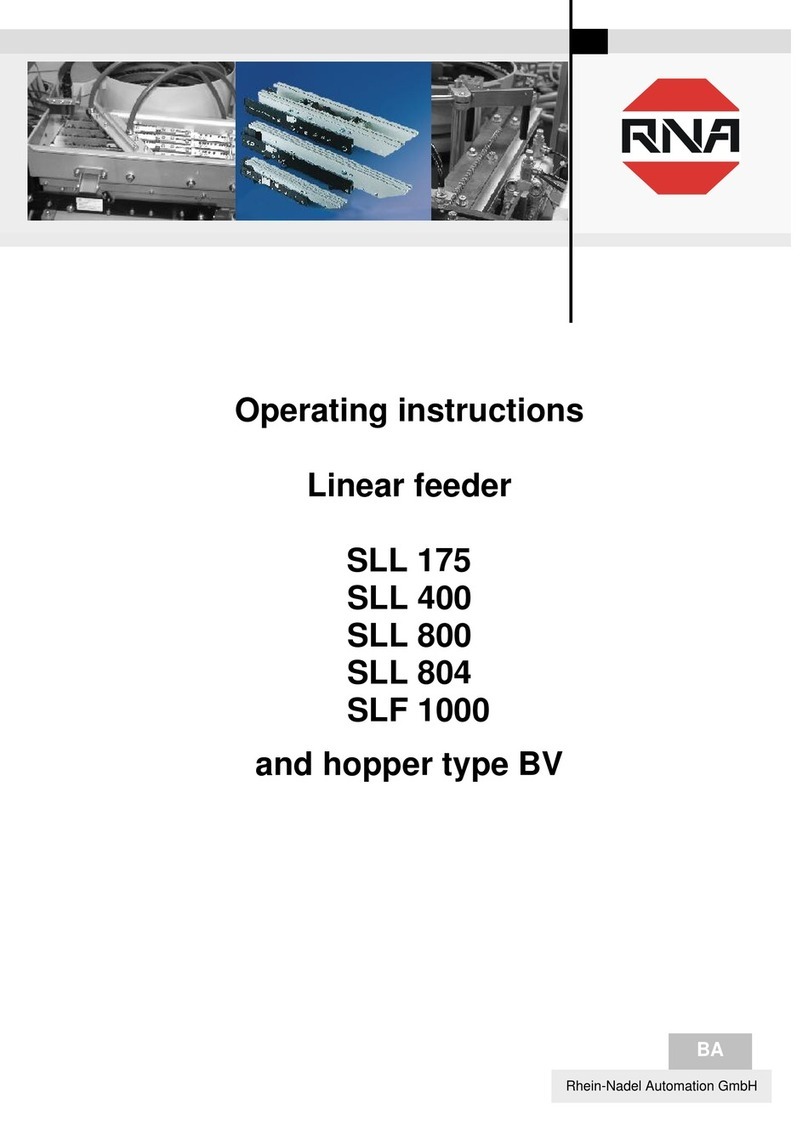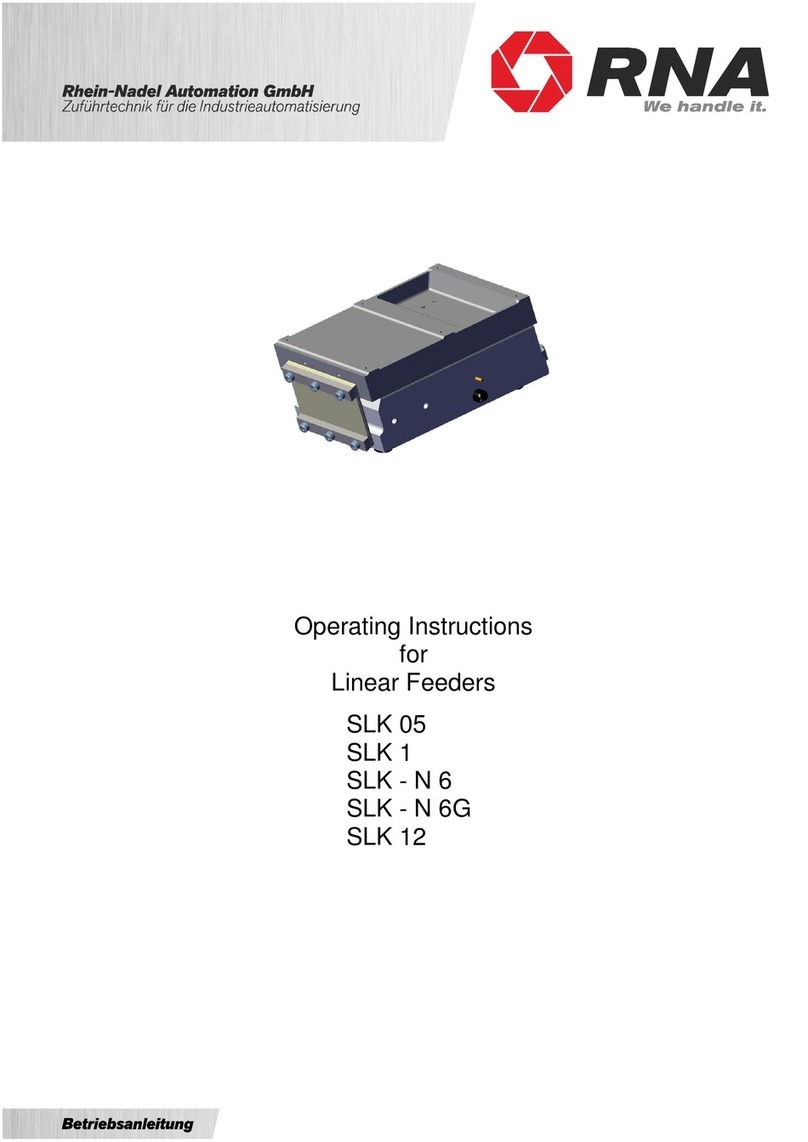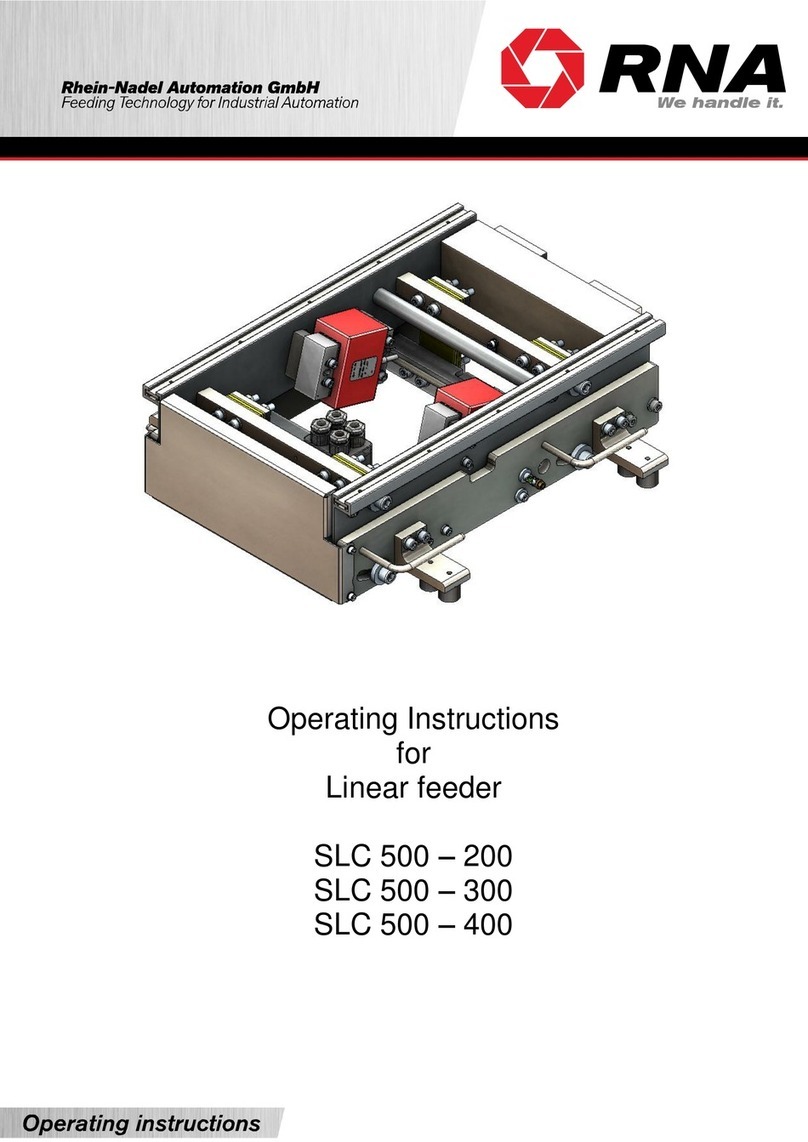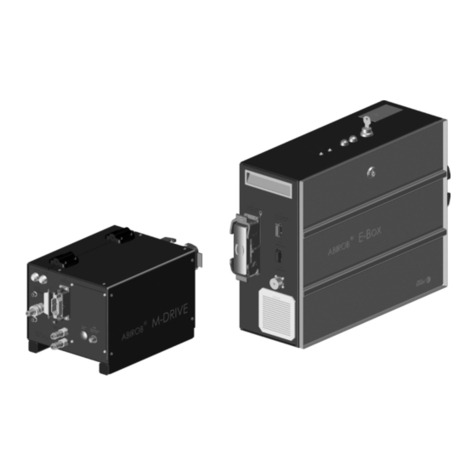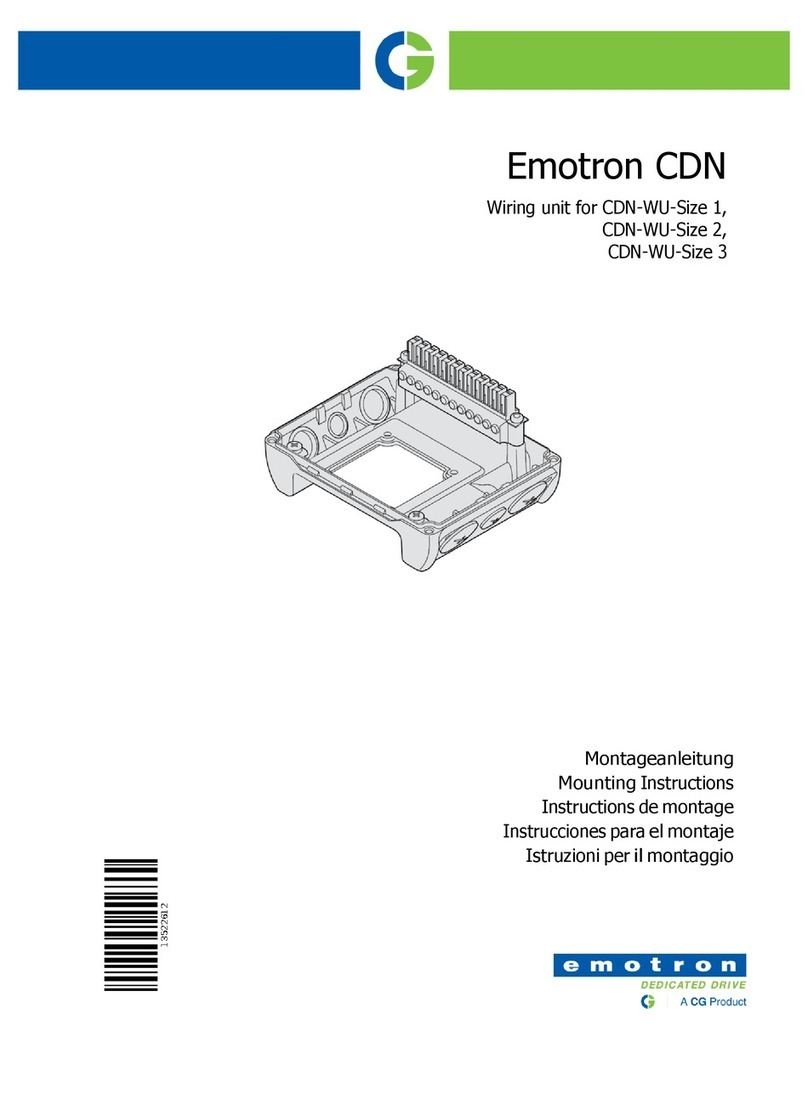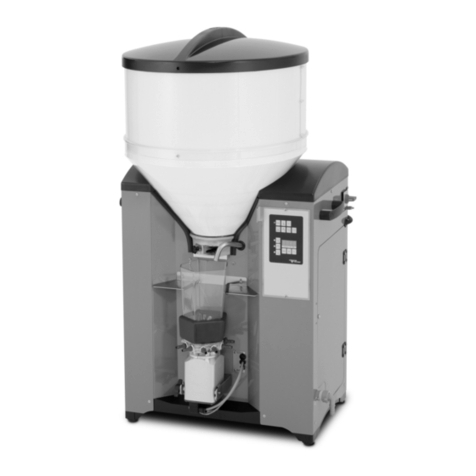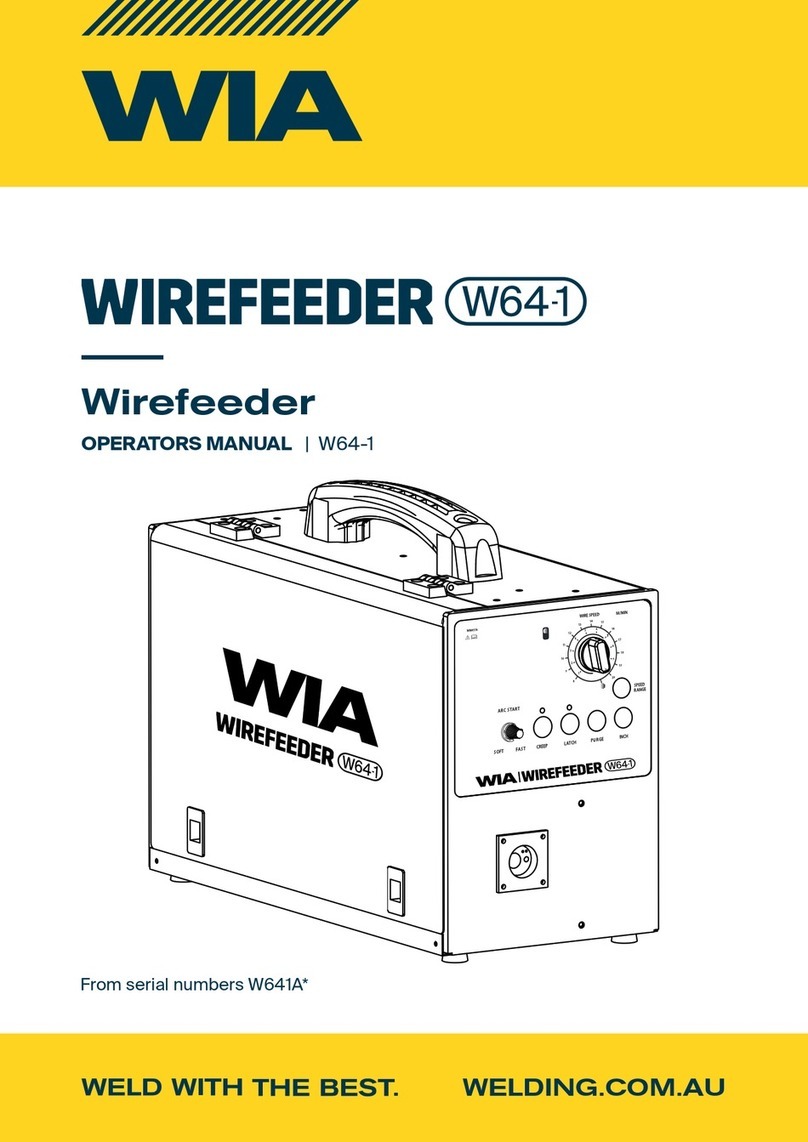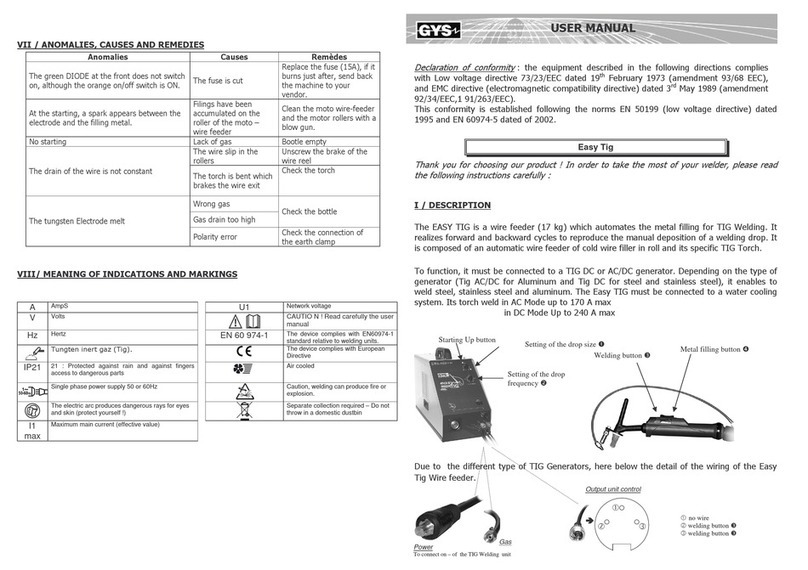In order to convey the material with its highest (maximum) conveying speed, it must optimally rest on (in) the track,
which means that the vertical amplitude should be zero, if possible. At long tracks the vertical amplitude can be too
high, owing to the deflection of the track. The material to be conveyed then makes little jumps on the track and
cannot be transported at all or only with low speed.
In exceptional cases it may become necessary to compensate the fluttering of the track at the ends by modifying
the counter-weight. In case the workpieces make little jumps at the discharge side or in case the material to be
conveyed runs backward, the counter-weight must be increased (stepwise by approx. 50 g). In case the workpieces
make little jumps at the feeding side (magnet side) or if their is no conveying movement at the discharge side, the
counter-weight must be decreased.
Adjustment of the natural frequency
In case the linear feeders are delivered without track, they has been adjusted in the plant to average weights of the
oscillating elements. In order to guarantee an optimal conveying behaviour, the linear feeder must be adjusted to
the definite operating conditions.
The adjustment is made by adding or removing leaf springs and washers.
First check, whether the right control unit (frequency, voltage, power supply, (see table "technical data" in chapter
1) has been connected.
Carry out the following steps:
Screw off the side panels. Tighten all spring fastening screws and track fastening screws. Please take the
tightening moments of the spring fastening screws from the table technical data (chapter 1).
Check, whether the magnet corresponds to the specifications in the "technical data" (voltage, frequency).
Measure the magnet-air gap. In case it differs from the specifications in the "technical data", adjust it correctly.
Fill the tracks with material to be conveyed and turn the turning knob of the control unit to 90 % of the conveying
capacity.
Loosen a fastening screw at one of the spring assemblies
(approx. 1/4-1/2 rotation).
While the spring fastening screw is loosened, you can see a change in the conveying speed.
The following graphic chart shows the resonance curve of a linear feeder:

